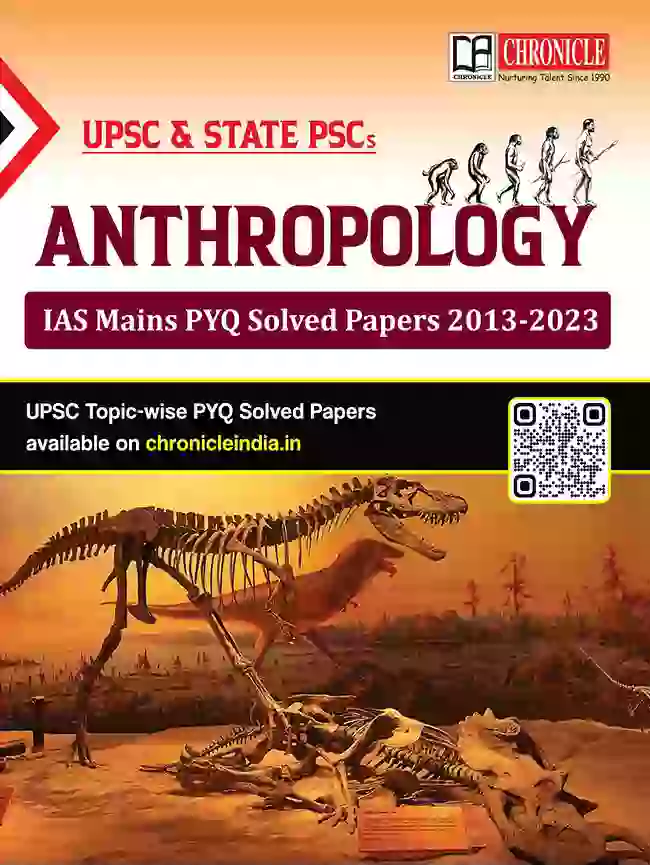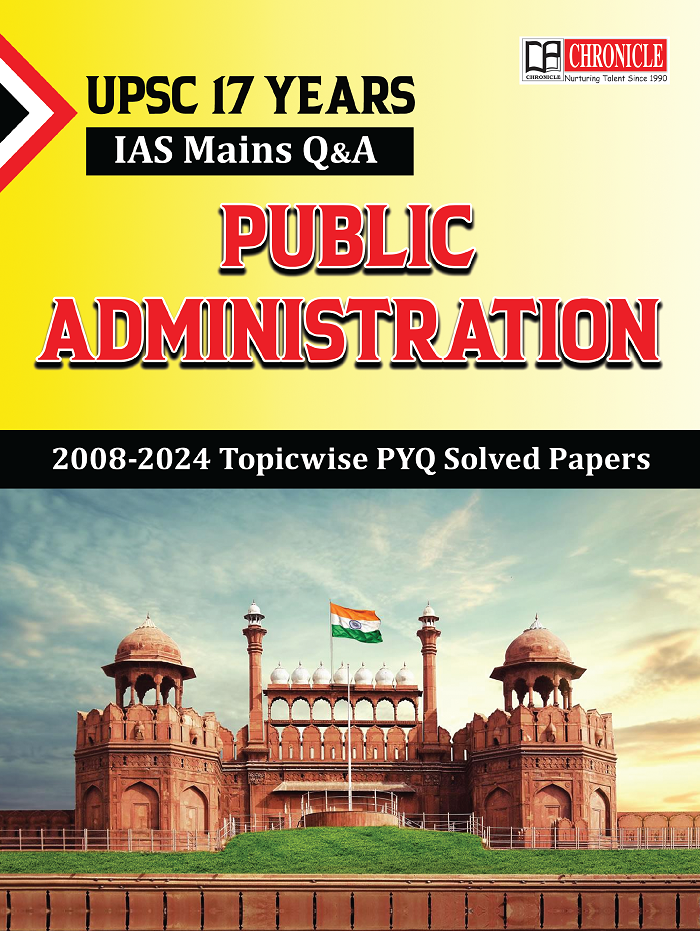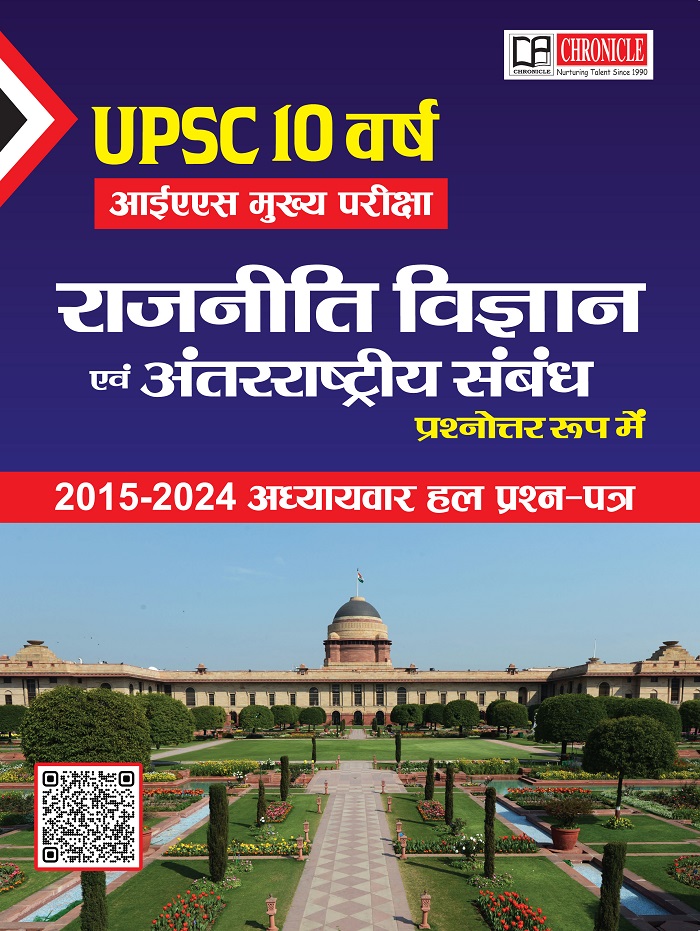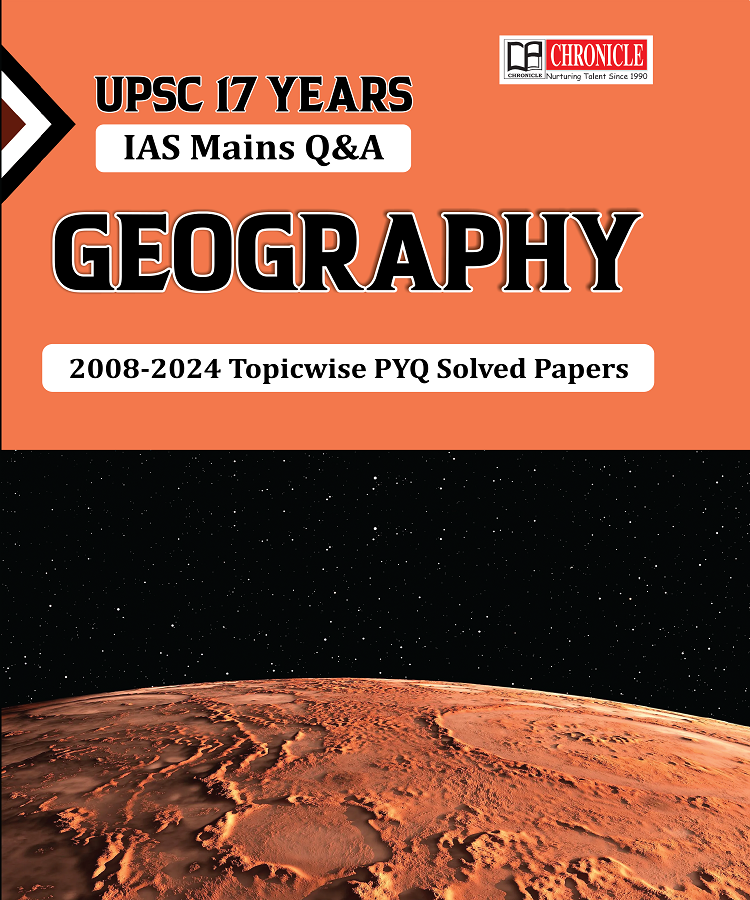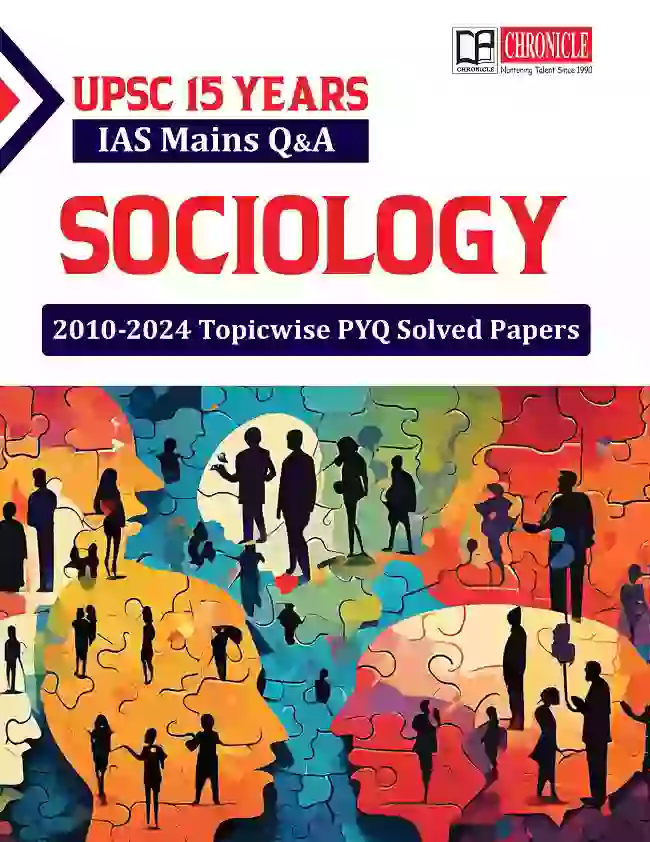Chronicle Anthropology IAS Mains PYQ Solved Papers 2013-2023
UPSC & State PSCs Anthropology IAS Mains Previous Years Questions ( PYQ ) Solved Papers 2013-2023
About the book: IAS Mains Anthropology PYQ Solved Papers
The Papers have been solved according to UPSC Civil Services Optional Syllabus. Also Useful for All State Public Service Commissions’ and Other Examinations
Q. What is the answer Writing Approach Adopted in this Book?
- Answers Written Exactly as per the Demands of the Questions, Containing Additional Information related to All Aspects of the Topics.
- Answers Cover All Dimensions, not Necessarily Adhering to the Prescribed Word Limit, to Enrich Your Knowledge and Help You Write Better Answers in Future.
Q. How this book will help you in answer writing practice?
There is in two ways
- You may use this book as a source of reference for the topics and write answers in your own unique way.
- You may write answers to previous years’ questions and compare them with the standard answers provided in this book.
Q. How many years UPSC CSE Main Exam Previous Years questions will solve in this book?
In this book we have published UPSC CSE Main Exam Previous Years (2013-2023) Solved Papers. The book contains answers of all the questions asked in the Mains Examinations, strictly adhering to the latest syllabus.
Book Contents
The questions are segregated chapter-wise as follows:
- Anthropology Mains Exam 2023 Solved PAPER-I
- Anthropology Mains Exam 2023 Solved PAPER-II
Chapter-I
- Meaning, Scope and development of Anthropology.
- Relationships with other disciplines
- Main branches of Anthropology, their scope and relevance
- Human Evolution and emergence of Man
- Characteristics of Primates;
- Phylogenetic status, characteristics and geographical distribution of the following:
- The biological basis of Life
Chapter - 2
- The Nature of Culture
- The Nature of Society
- Marriage
- Family
- Kinship
Chapter – 3
- Economic Organization
Chapter - 4
- Political Organization and Social Control
Chapter - 5
- Religion
Chapter - 6
- Anthropological theories
Chapter - 7
- Culture, Language and Communication
Chapter – 8
- Research methods in Anthropology
Chapter – 9
- Human Genetics: Methods and Application
Chapter - 10
- Concept of human growth and Development
Chapter – 11
- Relevance of menarche, menopause and other bioevents to fertility. Fertility patterns and differentials.
- Demographic theories-biological, social and cultural.
- Biological and socio-ecological factors influencing fecundity, fertility, natality and mortality.
Chapter – 12
- Applications of Anthropology
PAPER-II
Chapter - 1
- Evolution of the Indian Culture and Civilization—Prehistoric (Palaeolithic, Mesolithic, Neolithic and Neolithic-Chalcolithic), Protohistoricd (Indus Civilization). Pre-Harappan, Harappan and post-Harappan cultures. Contributions of the tribal cultures to Indian civilization.
- Palaeo—Anthropological evidences from India with special reference to Siwaliks and Narmada basin (Ramapithecus, Sivapithecus and Narmada Man).
- Ethno-archaeology in India: The concept of ethno-archaeology; Survivals and Parallels among the hunting, foraging, fishing, pastoral and peasant communities including arts and crafts producing communities.
Chapter – 2
- Demographic profile of India—Ethnic and linguistic elements in the Indian population and their distribution. Indian population—factors influencing its structure and growth.
Chapter - 3
- The structure and nature of traditional Indian social system—Varnashram, Purushartha, Karma, Rina and Rebirth.
- Caste system in India— Structure and characteristics Varna and caste, Theories of origin of caste system,
- Dominant caste, Caste mobility, Future of caste system, Jajmani system. Tribe-case continuum.
- Sacred Complex and Nature-Man-Spirit Complex.
- Impact of Buddhism, Jainism, Islam and Christianity of Indian society.
Chapter – 4
- Emergence, growth and development in India—Contributions of the 18th, 19th and early 20th Century scholar-administrators. Contributions of Indian anthropologists to tribal and caste studies.
Chapter – 5
- Indian Village—Significance of village study in India; Indian village as a social system; Traditional and changing patterns of settlement and inter-caste relations; Agrarian relations in Indian villages; Impact of globalization on Indian villages.
- Linguistic and religious minorities and their social, political and economic status.
- Indigenous and exogenous processes of socio-cultural change in Indian society: Sanskritization, Westernization, Modernization; Inter-play of little and great traditions; Panchayati Raj and social change; Media and Social change.
Chapter - 6
- Tribal situation in India—Bio-genetic variability, linguistic and socio-economic characteristics of the tribal populations and their distribution.
- Problems of the tribal Communities—Land alienation, poverty, indebtedness, low literacy, poor educational facilities, unemployment, under- employment, health and nutrition.
- Developmental projects and their impact on tribal displacement and problems of rehabilitation. Development of forest policy and tribals. Impact of urbanisation and industrialization on tribal populations.
Chapter - 7
- Problems of exploitation and deprivation of Scheduled Castes, Scheduled Tribes and Other Backward Classes.
- Constitutional safeguards for Scheduled Tribes and Scheduled Castes.
- Social change and contemporary tribal societies: Impact of modern democratic institutions, development programmes and welfare measures on tribals and weaker sections.
- The concept of ethnicity; Ethnic conflicts and political developments; Unrest among tribal communities; Regionalism and demand for autonomy; Pseudo-tribalism. Social change among the tribes during colonial and post-Independent India.
Chapter - 8
- Impact of Hinduism, Buddhism, Christianity, Islam and other religions on tribal societies.
- Tribe and nation state—a comparative study of tribal communities in India and other countries.
Chapter - 9
- History of administration of tribal areas, tribal policies, plans, programmes of tribal development and their implementation. The concept of PTGs (Primitive Tribal Groups), their distribution, special programmes for their development. Role of N.G.O.s in tribal development.
- Role of anthropology in tribal and rural development.
- Contributions of
344
Specifications |
|
|---|---|
| Availability | In-Stock |
| Language | English |
| Product Type | Print Edition |
| Edition | 2024 |
| Book Code | 392 |
| Shipment | Free |
| No. of Pages | 544 |
Ratings & Reviews


